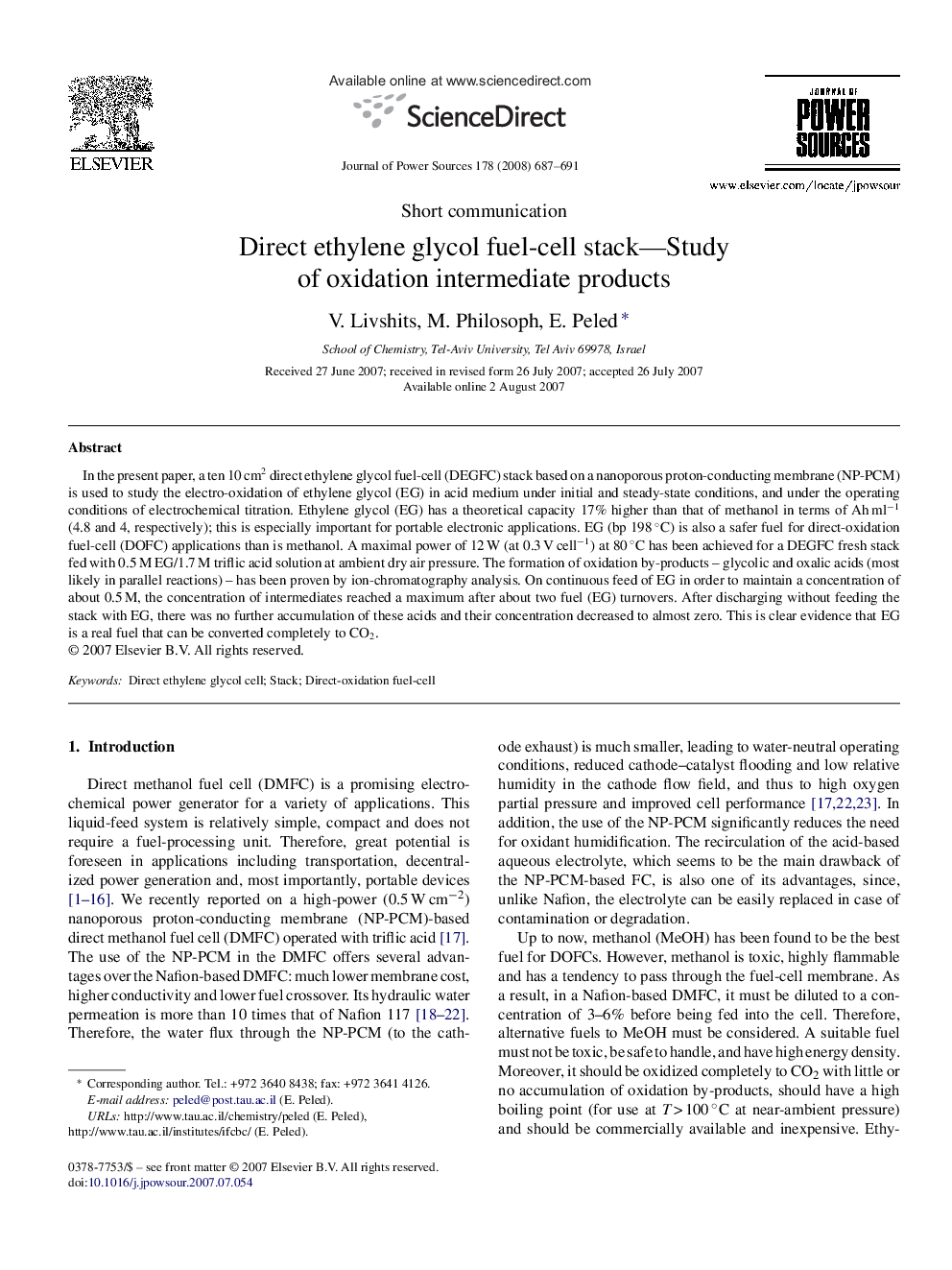| کد مقاله | کد نشریه | سال انتشار | مقاله انگلیسی | نسخه تمام متن |
|---|---|---|---|---|
| 1290732 | 973335 | 2008 | 5 صفحه PDF | دانلود رایگان |

In the present paper, a ten 10 cm2 direct ethylene glycol fuel-cell (DEGFC) stack based on a nanoporous proton-conducting membrane (NP-PCM) is used to study the electro-oxidation of ethylene glycol (EG) in acid medium under initial and steady-state conditions, and under the operating conditions of electrochemical titration. Ethylene glycol (EG) has a theoretical capacity 17% higher than that of methanol in terms of Ah ml−1 (4.8 and 4, respectively); this is especially important for portable electronic applications. EG (bp 198 °C) is also a safer fuel for direct-oxidation fuel-cell (DOFC) applications than is methanol. A maximal power of 12 W (at 0.3 V cell−1) at 80 °C has been achieved for a DEGFC fresh stack fed with 0.5 M EG/1.7 M triflic acid solution at ambient dry air pressure. The formation of oxidation by-products – glycolic and oxalic acids (most likely in parallel reactions) – has been proven by ion-chromatography analysis. On continuous feed of EG in order to maintain a concentration of about 0.5 M, the concentration of intermediates reached a maximum after about two fuel (EG) turnovers. After discharging without feeding the stack with EG, there was no further accumulation of these acids and their concentration decreased to almost zero. This is clear evidence that EG is a real fuel that can be converted completely to CO2.
Journal: Journal of Power Sources - Volume 178, Issue 2, 1 April 2008, Pages 687–691